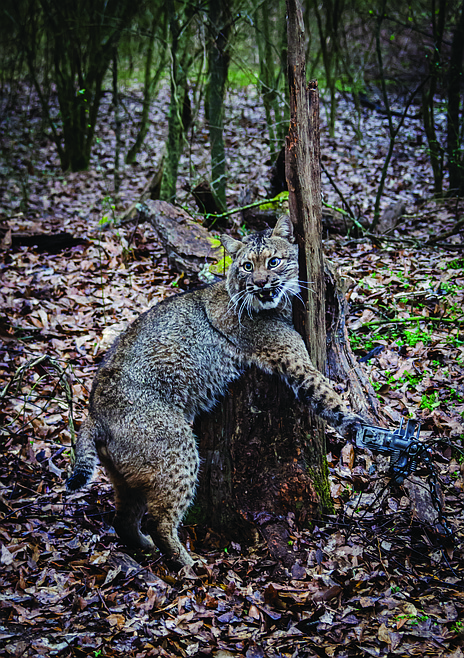Concerns about traps discussed
BONNERS FERRY — The week of May 11, Idaho Fish and Game Commission rejected a petition regarding signage concerning traps. The argument on behalf of trappers is that they said signage would encourage people to tamper with their traps.
The petition was written asking the commission to change the current standard of signage and to enforce trappers to use warning signs that traps are in the area within a stipulated area size.
Currently, the Idaho Fish and Game department does not require that trappers warn others that they have set traps.
Regulations require trappers to set traps a minimum of 300 feet from paved trails and only a minimum of 10 feet from the edge of an unpaved trail.
According to the Idaho Fish and Game website, “Trappers are encouraged to use this Warning Sign — [PDF, 2.7 MB] to inform recreational users that traps are in the area. Trappers may print off copies of the signs and post them near their trap lines. Using the warning signs is voluntary.”
Petitioners would like warning signs and those signs posted at a decent distance from the traps and be made mandatory.
Hikers, those hikers with dogs and/or other animals, and those recreating with children are at risk of being caught in a trap.
In 2010, Bob Norie of Boise Idaho, found his dog.
His pet had been snared by a neck snare in the Boise National Forest. The trap caused the dog major injuries to its neck, torso and right rear leg, and the dog had chewed its foot off as it attempted to escape the trap.
Norie’s dog survived, but had to have a leg amputated. Other pets are not as lucky.
Trapping is indiscriminate.
Records show that trapping, specifically neck snares, have killed more than 50 non-target species of animals. This includes pets like Nories dog, turkeys, black bears, bobcats, skunks, foxes, lions, deer, elk, and eagles.
Garrick Dutcher, Program Director of the 501(c)3 non-profit organization, Living with Wolves, explains, “ It happened to my friend’s dog while he, his dog, and I were hiking south of Bellevue, Idaho 15-20 years ago.”
“We thought a rattlesnake had bitten the dog because of his alarmed and panicked reaction,” said Dutcher. “My friend restrained his dog while I worked to release the trap and I know of another person from my community whose dog triggered another leghold trap right at a trailhead.”
The Feb. 12 petition, submitted during the quarterly Fish and Game Commission meeting had approximately 500 comments at that meeting.
The petition asked that trappers be mandated and required to post signage at public trailheads, public trails and campgrounds within 25 feet of where the trappers’ snares and traps were set. The petition also pleaded with Idaho Fish and Game to place signage to indicate that there is active wolf hunting in the areas.
On May, 7, the Idaho Fish and Game Commission voted to deny the petition.
Actual numbers of pets caught in traps are not known.
“My friend and I never reported our incident. It is likely that many incidents go unreported and that the fate of many pets’ is unknown by their owners,” said Dutcher. “Incidents actually reported by trappers from the 2012/2013 – 2018/2019 trapping seasons included 15 dogs caught in traps.”
According to statistics from the Humane Society of Huron Valley, “In the US, more than 4 million animals are caught, injured and killed in traps every year, but this number does not include non-target animals incidentally harmed or killed.”
Placing signs to warn visitors to an area where trapping is taking place could help save pets lives and help limit injuries to human traffic as well,
“With traps legally placed within 10 feet of public trails, it would clearly help avoid so many accidents if people were made aware of their presence,” said Dutcher. “This is especially pertinent with the increase in trapping activity.”
The Fish and Game hunting unit in Bonners Ferry is Unit 1. Since January 1, 2020, twenty three wolves have been killed by trappers. In the 2019-2020 season, 40 wolves were killed with traps.
“These numbers are up over the past few years by nearly 100 percent likely in response to much loosened regulations,” said Dutcher.
According to Dutcher, the most recent Idaho Fish and Game estimate on the numbers of wolves in Idaho by the year end of 2019 was 1,001.
“For context, Idaho is home to about 3 times more mountain lions than wolves, about 20 times more bears than wolves, and around 50 times more coyotes than wolves,” explained Dutcher. “These are the populations of the other large predatory species that live in Idaho, a state with ample wild space for a healthy system of prey and predator.”
For more information on the non-profit; Living with Wolves visit: livingwithwolves.org and for more information on the Idaho Fish and Game visit idfg.idaho.gov.

